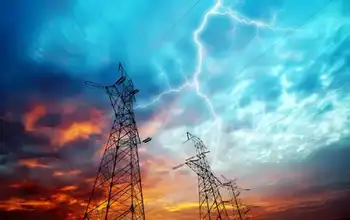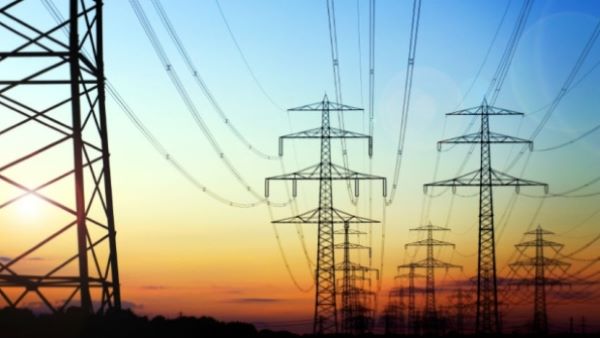Plans to harness the oceans excite coastal utilities
By The Daily News Online
Protective Relay Training - Basic
Our customized live online or in‑person group training can be delivered to your staff at your location.

- Live Online
- 12 hours Instructor-led
- Group Training Available
“I’m excited,” he said. “It’s right here in our backyard.”
Spurred by a nationwide push to develop green energy, entrepreneurs and public utilities are scouting WashingtonÂ’s coastline from the Strait of Juan de Fuca to the mouth of the Columbia River for places to generate electricity by channeling the sea through turbines.
Ocean energy advocates say the seaÂ’s reliability and proximity to coastal population centers provide a big benefit for a country trying to wean itself from fossil fuels. The ocean energy industry, however, is in its infancy and faces technical and environmental problems.
Critics warn that adding turbines to the ocean will bother salmon, migrating whales, boaters and fishermen. The president of the Columbia River Crab Fisherman’s Association, Dale Beasley, says crab pots, which can stray like cattle, won’t be able to coexist with turbines in turbulent seas. “I can’t even imagine how this could be compatible with our industry,” he said.
Meanwhile, environmental groups are torn: intrigued by the prospect of abundant green energy but leery about turning the sea into a power plant. And lawmakers, who are in position to make or break the fledgling form of energy, must balance the competing interests of their constituents.
“If I’m forced to take sides, I’d go with the crabbers,” said Democratic state Sen. Brian Hatfield, who represents the south coast. Still, he said he supports the interest public utilities in his district have in ocean energy. “To come out of the chute and say, ‘Hell, no,’ I think would be a mistake.”
The power of the sea is an asset and a drawback in generating electricity. A U.S. Department of Energy publication calls the technical challenges of harnessing the ocean a “nightmare.” While European countries have experimented with ocean energy, “the U.S. has done zippo,” said Roger Bedard of the Electric Power Research Institute in Palo Alto, Calif.
Bedard said he used to shrug and say he didnÂ’t know how much electricity could be generated by ocean waves. But he was asked so many times that he made some assumptions and estimated that 8.5 million U.S. homes could be powered by waves by 2025.
One assumption Bedard made is that somebody puts something in the water to see if it works. “We don’t really know,” he said. “No one’s ever done it.”
Puget Sound and the Oregon Coast are candidates for pioneering efforts. A couple of years ago, though, it looked like WashingtonÂ’s coast would have that distinction.
In 2007, the Federal Energy Regulatory Commission licensed a Canadian company, Finavera Renewables Ocean Energy, to attach four wave-energy buoys to the ocean floor two miles off the coast of Clallam County. A 3.7-mile underwater cable was to transmit the electricity to shore. A FERC commissioner called it a historic day for a “new energy frontier.” This month, however, Finavera will surrender its license without building anything. The company cites the bad economy and limited capital and says it will focus on wind power.
Another company, Seattle-based Grays Harbor Ocean Energy Co., studied generating electricity with waves 2.5 miles off the mouth of Grays Harbor and concluded the power would be too expensive by the time it reached inland population centers in the Seattle and Tacoma areas — about four times as expensive as the hydroelectricity produced at Bonneville Power Administration dams, company president Burt Hamner said. “Based on that, no utility will buy it,” he said. “Anything done in the ocean just costs more.”
Hamner said he had envisioned waves producing a significant amount of electricity at the mouth of Grays Harbor. Now, he pictures an offshore windmill with waves running through turbines built into the platform’s legs, generating a relatively modest amount of energy to supplement the wind power. “I don’t see why we should be doing large-scale wave (projects) off the coast of Washington until there’s a market for it,” he said.
A third company, New York-based National Current Services, is studying generating electricity with tides off the north shore of Willapa Bay. The company has had meetings with Grays Harbor and Pacific County PUDs about collaborating on further studies.
The PUDs also want to explore making electricity in Grays Harbor and at the mouth of the Columbia River. PUD officials say ocean energy — as timely as the tides — could supplement less-predictable wind power. Also, building the projects could create jobs. “Tidal energy is something that exists in our backyard and has the potential to be a valuable renewable resource,” Grays Harbor PUD spokeswoman Liz Anderson said.
Putting anything in the water may be several years away and depend on whether someone other than PUDs ratepayers pays for it. “We’re not going to put $7 million into this project,” said Miller of the Pacific County PUD.
Uncle Sam has the deep pockets, and the PUDs are appealing to Southwest Washington Congressman Brian Baird to help them get $1.5 million for more studies.
Baird said he agreed the federal government “needs to keep some money in play” to explore ocean energy, but he was noncommital on how hard he will push for funding for the PUDs’ study. He said he wants more assurance a study will lead to something. “I’m a bit circumspect about that,” he said.
Baird said he’s intrigued by the potential of ocean energy but mindful of the technical problems. “Because there is so much energy, it’s hard to harness. The ocean beats things up in short order,” he said. “My gut feeling is that there are more readily available sources that are more economically sustainable and less complicated to maintain.”
More than technical shortcomings or economics, ocean energy has been smothered by regulations, Bedard said. “Regulatory agencies have to come up with streamlined procedures to allow developers to get permits at a reasonable cost and in a reasonable time,” he said. “Right now, it’s totally unreasonable.”
The Obama administration has pledged to remove regulatory barriers. New Secretary of Interior Ken Salazar has said developing offshore wind, solar and wave energy will be a top priority.
In Congress, U.S. Rep. Jay Inslee, a Washington Democrat whose district includes the tidal energy-interested Snohomish County PUD, has proposed the federal government pay for environmental studies associated with ocean energy proposals.
Sean OÂ’Neill, the co-founder of the Ocean Renewable Energy Coalition, a national trade association, said ocean energy is about 20 years behind wind power, but it could catch up in a few years with an assist from taxpayers.
“I’m thinking three to five years, but I’m an eternal optimist,” he said. If ocean energy moves from the drawing board to the water, environmental groups may face a difficult choice about which value to support: green energy or uncluttered seas.
The international beach preservation organization Surfrider Foundation is monitoring but so far neutral about energy development off WashingtonÂ’s coast.
“I think it’s a challenge for environmental groups because it’s easier to say ‘no’ than to say ‘yes’ to a project,” foundation spokesman Chad Nelsen said. “Any project you choose to oppose just means that the energy is going to come from some place else.”
Commercial fishermen already are calling ocean energy development a threat to their livelihoods.
“I think it’s very risky,” said Ronald Craig, manager of the Willapa Bay Regional Fisheries Enhancement Group. “I would be very skeptical.”
Beasley of the Crab Fisherman’s Association said energy projects would be “competing for real estate we need for fishing.”
Developing ocean energy would damage, maybe kill, the coastal fishing industry in exchange for expensive power, he said.
“Look at the fishing industry. It’s still one of the biggest industries in our state, and it supplies a lot of jobs,” Beasley said.











